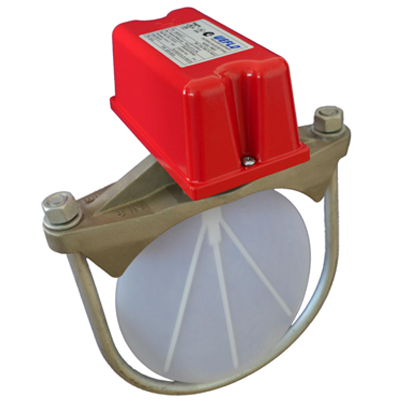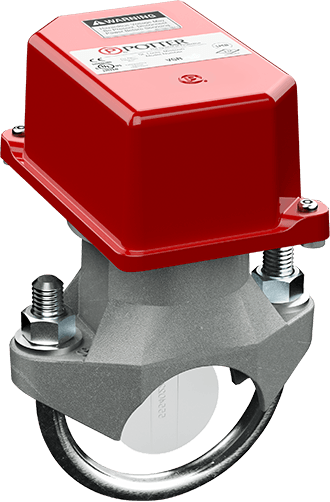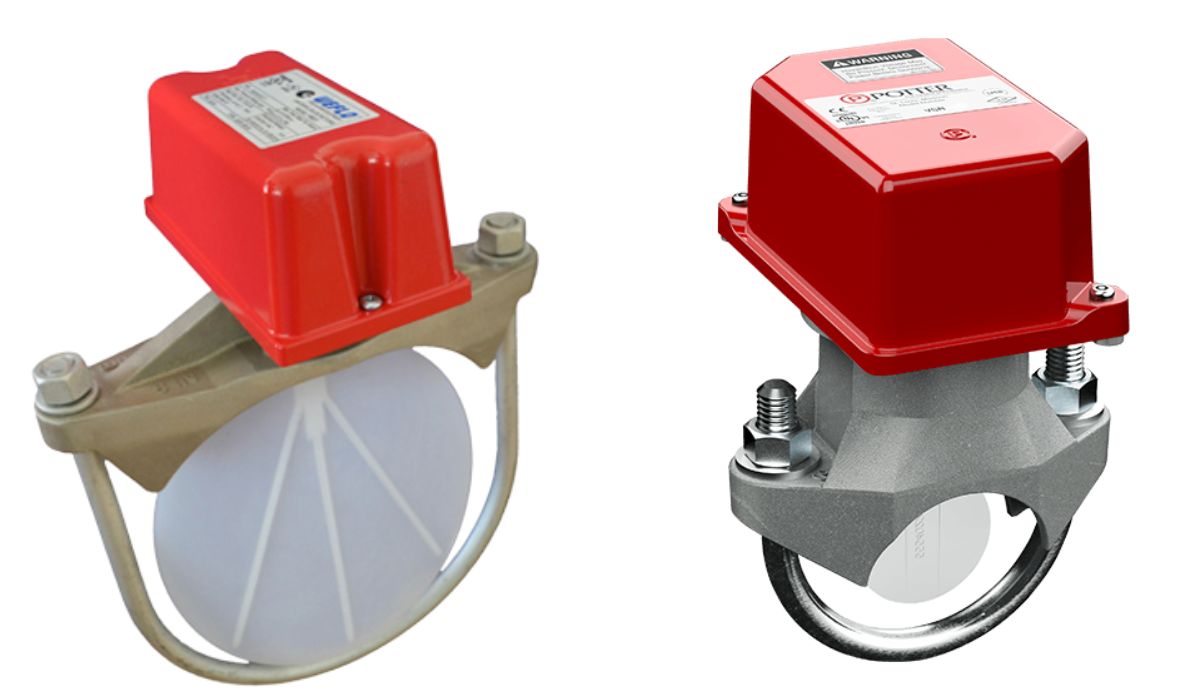A water flow detector switch monitors the flow of water in a system. It triggers an alarm or action when irregularities occur.
Water flow detector switches are essential in various applications, including fire protection systems and industrial processes. These devices ensure that water flows correctly, helping to prevent damage and maintain system efficiency. They detect any disruption in water flow and immediately alert the system or operator, allowing for quick intervention.
This early warning capability is crucial for safety and operational integrity. With advancements in technology, modern water flow detector switches are becoming more reliable and easier to install. Their importance in safeguarding property and processes cannot be overstated, making them a vital component in many systems.
Introduction To Water Flow Detectors
Water flow detectors are crucial devices in plumbing systems. They help monitor and control water flow. These detectors ensure safety and efficiency in various applications.
Importance In Plumbing
Water flow detectors play a vital role in plumbing. They help detect leaks and pipe bursts. This prevents water damage and waste. They also ensure the proper functioning of fire sprinkler systems. By monitoring water flow, they help maintain system integrity.
Basic Functionality
Water flow detectors work by sensing the movement of water. They use various mechanisms like paddle wheels or ultrasonic sensors. Once water flow is detected, they send a signal to a control panel. This triggers alarms or shuts off water supply if needed. Their simple yet effective design makes them reliable.
| Feature | Description |
|---|---|
| Sensing Mechanism | Paddle wheels, ultrasonic sensors |
| Signal Output | Alarm activation, water shutoff |
| Application | Leak detection, fire sprinklers |
- Detects leaks and bursts
- Ensures fire sprinkler performance
- Monitors water flow
- Senses water movement
- Sends signal to control panel
- Activates alarms or shuts off supply

Credit: tpmcsteel.com
Types Of Water Flow Detector Switches
Water flow detector switches help monitor water flow in pipes. They are crucial for safety and system efficiency. They come in two main types: mechanical and electronic.
Mechanical Switches
Mechanical switches use moving parts to detect water flow. They are often sturdy and simple to use.
- Paddle Switches: A paddle moves when water flows, activating the switch.
- Diaphragm Switches: A diaphragm reacts to water pressure changes, triggering the switch.
Mechanical switches are reliable and cost-effective. They do not need external power to work.
Electronic Switches
Electronic switches use sensors to detect water flow. These sensors are very accurate and can measure small changes in flow.
- Ultrasonic Sensors: Use sound waves to measure water flow.
- Magnetic Sensors: Detect changes in magnetic fields caused by water flow.
Electronic switches often have digital displays and advanced features. They can be linked to smart systems for better control.
| Feature | Mechanical Switches | Electronic Switches |
|---|---|---|
| Cost | Low | High |
| Accuracy | Good | Excellent |
| Power Requirement | None | External Power |
Key Features To Consider
Choosing the right water flow detector switch can be challenging. These devices are vital for monitoring and controlling water flow in various systems. This section highlights key features to consider for an effective and reliable water flow detector switch.
Sensitivity Levels
The sensitivity level of a water flow detector switch is crucial. It determines how quickly the device detects changes in water flow. High sensitivity levels are ideal for systems that require immediate response. Low sensitivity levels work well in stable environments.
Here is a simple table showing the advantages of different sensitivity levels:
| Sensitivity Level | Advantages |
|---|---|
| High | Quick response, Suitable for critical systems |
| Low | Stable performance, Less false alarms |
Durability
Durability is another important feature to consider. A durable water flow detector switch ensures long-lasting performance. It should resist harsh conditions like extreme temperatures and high pressure. This is especially important in industrial settings.
Durable switches are often made from materials like stainless steel or high-grade plastic. These materials prevent corrosion and physical damage. A durable switch reduces maintenance costs and ensures reliability.
Below is a list of common materials used for durability:
- Stainless Steel
- High-Grade Plastic
- Brass
Choosing a durable switch means less frequent replacements. This ensures uninterrupted operations and cost savings.
Installation Process
The installation process of a Water Flow Detector Switch is straightforward. It ensures your system operates efficiently. Follow our simple guide to get it done right.
Required Tools
Gather these tools before starting:
- Adjustable Wrench
- Pipe Cutter
- Teflon Tape
- Screwdriver
- Measuring Tape
- Drill
Step-by-step Guide
- Turn off the Water Supply: Ensure no water flows through the pipes.
- Measure the Pipe: Use the tape to measure the section where the switch will go.
- Cut the Pipe: Use the pipe cutter to make a clean cut.
- Apply Teflon Tape: Wrap the tape around the pipe threads to prevent leaks.
- Install the Switch: Place the switch in the cut section. Tighten it with an adjustable wrench.
- Secure the Switch: Use screws and a screwdriver to secure the switch in place.
- Connect the Wires: Follow the wiring diagram provided with the switch.
- Drill Holes: If needed, drill holes to run the wires neatly.
- Turn on the Water Supply: Ensure the switch activates properly.
- Test the System: Check for any leaks and ensure the switch works.
Completing these steps will ensure your Water Flow Detector Switch is installed correctly and functions as expected.
Common Applications
Water Flow Detector Switches are essential for monitoring water flow in various settings. These switches ensure the safety and efficiency of water systems.
Residential Use
In homes, Water Flow Detector Switches play a crucial role. They help in detecting leaks and preventing water damage. Homeowners can install them in areas like:
- Basements
- Bathrooms
- Kitchen sinks
- Laundry rooms
These switches can also alert homeowners about potential floods. This early detection helps in saving repair costs.
Commercial Use
In commercial buildings, Water Flow Detector Switches are vital. They help in maintaining large-scale water systems. Common applications include:
| Area | Purpose |
|---|---|
| Office Buildings | Monitor water supply and prevent leaks |
| Shopping Malls | Ensure efficient water usage |
| Factories | Monitor cooling systems |
| Hospitals | Maintain hygiene and safety |
These switches help reduce water wastage and ensuring safety. They provide real-time alerts for quick actions.
Benefits Of Using Water Flow Detectors
Water flow detectors are essential devices for monitoring water systems. They offer numerous benefits that enhance safety, efficiency, and cost savings. Below are the main advantages of using water flow detectors.
Leak Prevention
Water flow detectors can detect leaks early. This prevents potential water damage. Early detection saves on repair costs and reduces water waste.
- Early leak detection prevents extensive property damage.
- Saves money on costly repairs.
- Reduces water waste, promoting sustainability.
With water flow detectors, you can maintain a safe environment. This ensures peace of mind for property owners.
Water Conservation
Water flow detectors help in conserving water. They monitor water usage and identify wastage points.
- Promotes efficient water use.
- Helps in identifying areas of high water consumption.
- Supports sustainable living practices.
By using water flow detectors, you can reduce your water bill. This also contributes to environmental conservation efforts.
Maintenance Tips
Regular maintenance of your water flow detector switch ensures its longevity and efficiency. Following these tips can help you maintain optimal performance.
Regular Inspections
Conducting regular inspections is crucial for the health of your water flow detector switch.
- Check for any signs of wear or damage.
- Ensure all connections are secure and tight.
- Inspect the wiring for any frays or breaks.
These simple checks can prevent bigger problems down the road.
Cleaning Procedures
Keeping the water flow detector switch clean helps maintain its efficiency.
- Turn off the main water supply.
- Remove the switch cover carefully.
- Use a soft brush to clean dust and debris.
- Check the sensors for any blockages.
- Reassemble the switch and turn the water back on.
A clean switch operates more effectively and lasts longer.

Credit: weflo.com
Troubleshooting Issues
Water flow detector switches are vital in monitoring water systems. But sometimes, they can have problems. Understanding how to troubleshoot can save you time and money.
Common Problems
Several issues can affect a water flow detector switch. Here are some common problems:
- False Alarms: The switch triggers without actual water flow.
- No Alarm: The switch fails to trigger despite water flow.
- Erratic Behavior: The switch triggers inconsistently.
- Physical Damage: Parts of the switch are broken or worn out.
Quick Fixes
Fixing these issues can be straightforward. Below are some quick fixes:
| Problem | Solution |
|---|---|
| False Alarms | Clean the sensor. Check for debris or blockages. |
| No Alarm | Ensure the power supply is stable. Verify wiring connections. |
| Erratic Behavior | Inspect for loose connections. Tighten or replace as needed. |
| Physical Damage | Replace damaged parts. Contact the manufacturer if needed. |
Always follow the manufacturer’s guidelines. Regular maintenance can help avoid many problems.
Future Trends
The world of Water Flow Detector Switches is evolving rapidly. With advancements in technology, these devices are getting smarter and more efficient. Let’s explore the key future trends shaping this industry.
Smart Home Integration
Modern homes are becoming smarter. Water Flow Detector Switches are now integrating with smart home systems. This allows for seamless control and monitoring of water flow through mobile apps or voice commands.
- Integration with popular smart home platforms like Alexa and Google Home.
- Real-time alerts are sent to your smartphone.
- Automated water shutoff during leaks.
These integrations not only add convenience but also enhance safety and efficiency. Homeowners can now prevent water damage effortlessly.
Advanced Technologies
The use of advanced technologies is revolutionizing Water Flow Detector Switches. Innovations such as IoT, AI, and machine learning are making these devices more intelligent.
| Technology | Benefits |
|---|---|
| IoT | Enables remote monitoring and control. |
| AI | Improves accuracy in leak detection. |
| Machine Learning | Predicts potential issues before they occur. |
With these technologies, Water Flow Detector Switches are becoming more reliable and user-friendly. They offer predictive maintenance and smarter water management solutions.

Credit: www.pottersignal.com
Frequently Asked Questions
What Is A Water Flow Sensor Switch?
A water flow sensor switch detects and monitors water flow in pipelines. It ensures efficient water usage and system protection.
How Do I Know If My Flow Switch Is Bad?
To know if your flow switch is bad, check for inconsistent flow readings, unresponsive switch behavior, or error codes. Test the switch with a multimeter. Inspect for visible damage or wear. Replace if issues persist.
What Does A Waterflow Detector Do?
A waterflow detector senses water flow in fire sprinkler systems. It triggers an alarm if water is detected, indicating a possible fire.
How Do Water Flow Switches Work?
Water flow switches detect the flow of water in a system. They activate or deactivate devices based on flow rate. These switches ensure proper functioning of equipment, preventing damage and maintaining efficiency.
Conclusion
A water flow detector switch is essential for monitoring water systems effectively. It ensures safety, efficiency, and cost savings. Investing in a reliable switch enhances system performance and prevents potential damage. Choose the right water flow detector switch for your needs and enjoy peace of mind.
Protect your property and resources today.

I’m Abdus Sobur, a highly skilled and professional Fire Safety Officer with a passion for safeguarding lives and property. Over the course of my career, I’ve conducted numerous successful fire safety audits, earning a reputation for excellence in ensuring public safety.
In addition to my role as a Fire Safety Officer, I’m also dedicated to raising awareness about the importance of fire safety. Through my blog, I share insights into the functions of different fire safety equipment, aiming to empower individuals with the knowledge they need to protect themselves and their communities.
I’m driven by a deep commitment to promoting fire safety awareness and preventing fire-related incidents.

